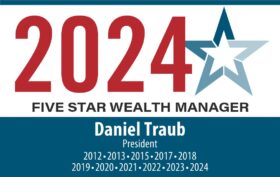In sync with you, in sync with the markets
Sign Up for Our Email List
Tempo Financial Advisors, LLC
75 Second Ave, Suite 605
Needham, MA 02494
Phone: 508-655-7827
Email: info@tempoadvisors.com
© 2025 Tempo Financial Advisors, LLC

Take Stock in the Summer
One common Wall Street adage says to “Sell in May and Go Away.” The idea is that stocks have historically performed better from November through April than from May through October and that we would be better off not owning stocks at all between May and October. Even if you’ve never heard this saying before perhaps you’ve noticed that many negative periods have occurred in October (1929 and 1987, for example). Let’s test the adage.
I studied the returns for the S&P 500 from May 1926 through April 2012. Over this 86 year period the average six month gain for the November-April period was 7.4% whereas the return for the May-October period was 4.1%. So it does appear true that returns have indeed been historically better in the winter months. Of course I don’t know anyone who has held stocks for the past 86 years. Let’s look deeper.
As you can see in figure 1 the worst six month period actually occurred in the November-April window and the best six month period occurred in the May-October period.
Further, there were long intervals that the Sell in May and Go Away strategy not only didn’t work, but the results would have been horrible (see figure 2).
Can you imagine how you would feel had you implemented this strategy in 1934? It makes me wonder if in 1943 someone tried to coin the phrase, “Sell in the Fall and Go have a Ball,” or something equally catchy.
Sometimes it was not so much a matter of one interval performing better than the other, simply that the May-October period was profitable on its own.
Certainly if forced to choose between investing in only one of the periods listed in figure 3 I would select the November-April period. But I don’t have to choose and I’d be pretty happy with the May-October returns as well. Even the 72% return in the ’90s is equivalent to an average annual return of 11.4%.
Overall the May-October period generated positive returns 70% of the time (figure 4). Given that the magnitude of the average gain/loss was very similar we can think of this like a coin flip stacked in our favor.
In the classic coin flip game there is an equal chance of heads and tails. If we bet $10 on heads and flip the coin 100 times we expect to break even. But if we play with a “fixed” coin that is expected to come up heads 7 out of 10 times (70%) then if we bet $10 on heads and flip the coin 100 times our expected outcome is +$400. I can live with that!
Finally, none of the above statistics take into account the costs of selling every spring. These include trading costs and tax considerations, both of which would dilute the strategy’s effectiveness.
The point is that while the November-April time frame overall has been more profitable there have been long stretches when that has not been true. And even when it is has been better that does not necessarily lead to the conclusion that the May-October will be bad.
I have no idea if the Sell in May and Go Away strategy will work this year (it very well might), or any year for that matter. But I do know that I will be better off not selling more often than not.
Daniel J. Traub is president of Tempo Financial Advisors, LLC and can be reached at dtraub@tempoadvisors.com.
Return to Top
Return to Commentaries